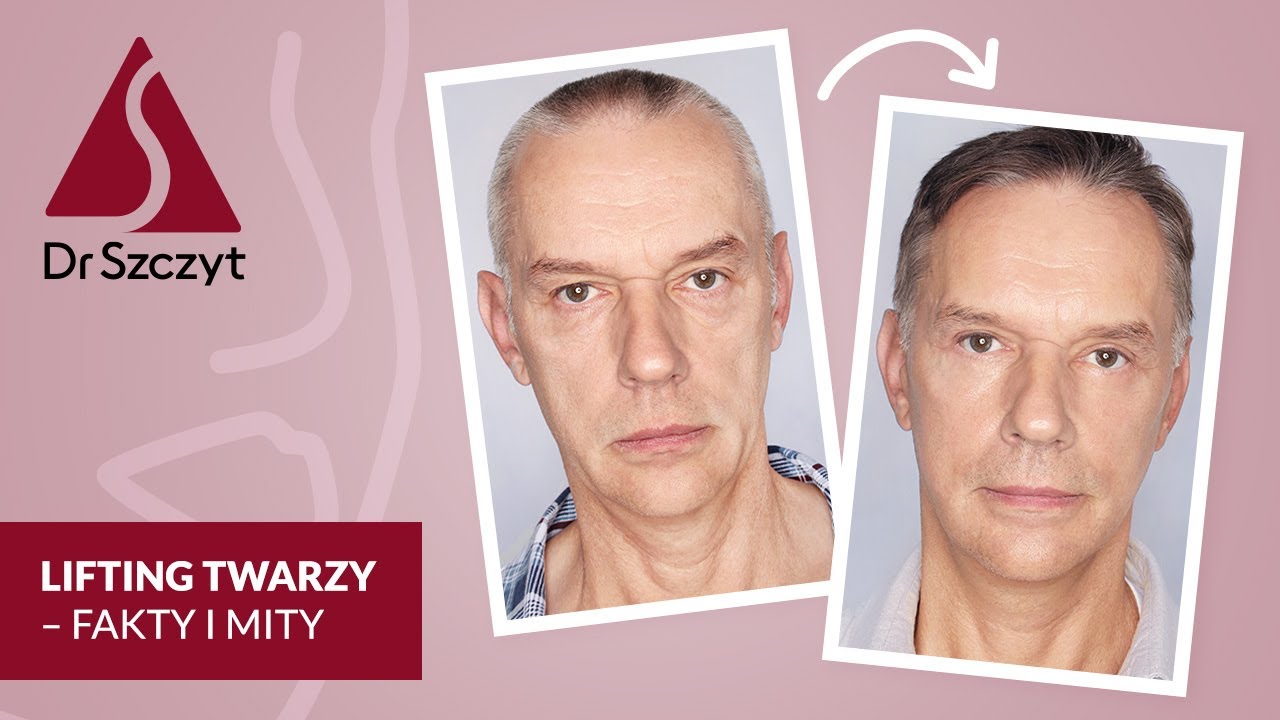Daily facial massage instead of botox? Facts and myths

The trend of facial massage as a way to look young is gaining popularity. But can daily skin massaging replace aesthetic medicine treatments? A gentle massage improves microcirculation, relaxes and briefly brightens the complexion, but it has limited potential. We compare the effects of regular facial self-massage with those of professional aesthetic procedures.
What is facial massage and why has it become popular?
Daily facial massage is one of the most frequently recommended skin care rituals on social media in recent years. Promoted as a natural alternative to aesthetic medicine treatments, it promises spectacular results without the need to reach for a needle or scalpel. Depending on the technique, it can be performed manually, using a roller, gua sha plate or special massagers. Its proponents insist that just a few minutes a day is enough to improve the appearance of the skin and delay the aging process.
The interest in massage is also due to its easy accessibility - it does not require advanced tools or specialized knowledge, and many techniques can be safely performed at home on your own. For those who are afraid of invasive methods or want to prolong the effects of professional treatments, daily facial massage is undoubtedly an attractive and relaxing alternative.
Types of daily facial massage
There are many facial massage techniques, differing not only in intensity and method of execution, but also in the purpose of the action.
- Hand massage - can be based on one's own intuition or on professional methods like Kobido massage, which originated in Japan. It is a dynamic, multi-step manual technique that combines deep tissue stimulation with elements of lifting, drainage and acupressure.
- Facial rollers - usually made of jade or quartz. They are used to cool, relax and improve circulation within the skin. The roller's movements promote lymphatic drainage and relieve swelling.
- Gua sh a - is a plate (usually made of natural stone) that is dragged over the skin according to the direction of lymphatic drainage. Gua sha is particularly prized for its ability to reduce muscle tension and improve the facial oval. Its action is based on the gentle but repetitive "sliding" of the plate over the muscles and lines of the face.
- Vibrating and ultrasonic massagers - are everyday devices that stimulate the skin and facial muscles through micro-vibrations or sound waves. Their purpose is to improve skin tone, promote absorption of cosmetics and relaxation.
All techniques share the common goal of stimulating the skin and facial muscles, improving circulation and preserving a younger appearance for longer - without the use of needles or invasive methods.
Benefits of daily facial massage
A daily massage, especially when performed regularly, gently and with care for many people, will be a valuable part of their daily skin care routine.
- Gently massaging the face stimulates blood flow in the capillaries of the skin, resulting in better oxygenation and temporary brightening. The skin looks more rested and radiant after the massage.
- Massage aids lymphatic drainage, or the draining of excess fluid from the tissues. This is especially noticeable in the eye area, where morning swelling often decreases after a few minutes of massage with a gua sha plate or roller.
- Daily relaxation of tense areas (e.g., jaw, forehead) alleviates reflex tightening of facial muscles, which promotes soft features and can partially reduce the deepening of fine lines.
- Massaging with the oil or serum helps distribute the product evenly and facilitates its absorption by the skin.
- Improved circulation and light drainage give the face a fresh, tightened look - but this effect usually lasts only a few hours.
However, it is worth noting that there is limited scientific research on the long-term effects of facial massage on the aging process, and the benefits are primarily due to temporary and relaxation effects¹.
Massage vs. muscle tension
Many people don't realize how big a role muscle tension plays in the appearance of the face. Severe, chronic tension in the jaw area (such as in the course of bruxism), forehead or between the eyebrows over time leads to the perpetuation of facial wrinkles, facial asymmetry and a tired expression.
Regular massage of these areas relaxes tense muscles, reduces the force with which certain muscle groups work (e.g., frowning eyebrows), helps soften facial features and facial expressions, and reduces discomfort associated with tension (e.g., jawbone, headaches). However, these effects are mild and require regularity.
Massage and collagen production
Can facial massage stimulate collagen production? This is one of the more frequently asked questions. Theoretically - gentle mechanical stimulation of the skin can stimulate microcirculation and contribute to better nourishment of tissues, which promotes regenerative processes. However, there is not enough scientific evidence to prove that massage alone, without the involvement of stronger stimuli (e.g., needles, laser, ultrasound), significantly increases collagen synthesis. Compared to procedures like needle mesotherapy, micro-needle radiofrequency or fractional laser, massage has only a superficial effect. Therefore, although it promotes skin condition and improves skin tone right after it is performed, it does not remodel deeper skin structures and does not cause permanent collagen thickening.
Also check out: the best body treatments for bikini season - get your skin ready for summer!
Facts and myths about facial massage
Although facial massage has gained a lot of popularity as a "natural facelift," it's worth being clear about what you can realistically expect from it and what you can't. Let's also remember that improper technique or exaggeration can have the opposite effect.
- Pressing or stretching the skin too hard, especially when there is no slip, contributes to loss of elasticity and mechanical damage to collagen fibers.
- Massage performed on dry skin increases friction and the risk of microtrauma.
- Using the same technique without considering the skin type, such as gua sha with active acne, can exacerbate inflammation and spread bacteria.
- Too much or frequent use of vibrating massagers leads to hypersensitivity or irritation.
Massage is also not advisable immediately after aesthetic procedures until the skin is fully healed.
What are the effects of aesthetic medicine treatments?
Aesthetic medicine treatments are designed to work in the deep layers of the skin - where signs of aging occur. They produce real, clinically proven results as they stimulate collagen and elastin production, replenish lost volume, relax overactive facial muscles, and improve skin texture and tone.
Botulinum toxin vs massage
Botulinum toxin (Botox) works by blocking nerve impulses to facial muscles, leading to their temporary relaxation. As a result, facial wrinkles - such as the lion's wrinkle between the eyebrows, crow's feet or lines on the forehead - are smoothed out. The effects of the procedure are visible after a few days and last about 3-4 months, sometimes longer.
Facial massage can temporarily relax tense muscles, but does not have the ability to immobilize them. It works superficially and for a very short time - after a few hours the effect disappears. Thus, it is not able to remove facial wrinkles, but only slightly reduce their visibility in people with very elastic skin and small lines. Where wrinkles are already fixed, the effectiveness of massage is negligible, while Botox can smooth them out completely.
Fillers and volumetrics vs massage
As the years pass, the face loses volume - especially around the cheeks, temples and under the eyes. There is a so-called atrophy of the fat padding, resulting in sunken tissues and loss of youthful proportions. Hyaluronic acid-based fillers allow:
- Replenish volume losses,
- Lift sunken cheeks,
- fill the valley of tears,
- Smooth out nasolabial furrows.
The effects are visible immediately and last from several to several months, depending on the preparation used and the site of administration.
Facial massage has no effect on tissue volume. It can improve blood circulation and give the impression of more "full" skin right after the procedure, but it will not fill in collapses or reconstruct the youthful structure of the face. This effect is purely optical and very short-lived - incomparable to the effect of professional volumetry.
Regenerative treatments (laser, HIFU, RF micro-needling) vs massage.
Modern aesthetic medicine offers a range of regenerative procedures that have a real impact on the structure of the dermis - stimulating it to produce new collagen and elastin. Examples of such procedures include:
- Fractional laser CO₂ - works in a controlled manner on the deeper layers of the skin, reducing wrinkles, pores, scars,
- HIFU (High-Intensity Focused Ultrasound) - a focused ultrasound technology that heats the tissues in the SMAS layer (the same layer reached by the surgeon in a facelift), causing them to tighten,
- Radiofrequency microneedling (RF microneedling) - combines micropunctures with controlled tissue heating, resulting in intense skin remodeling.
Studies have shown that treatments such as HIFU can raise the facial oval by up to a few millimeters and permanently improve facial tone and density3,4. Massage, while beneficial for circulation and relaxation, does not go as deep, does not stimulate deep fibroblasts and does not initiate permanent collagen remodeling. Therefore, it cannot be considered a viable alternative to regenerative treatments - it can at most support them.
Frequently asked questions about facial massage (FAQ)
What are the real effects of facial massage that I can notice?
With regular, correct massage, you can expect short-term results - right after the treatment, your complexion is oxygenated and radiant, puffiness (such as under the eyes) is reduced due to lymph drainage, and you feel relaxed. Long-term, massage can slightly improve muscle tone and blood flow, which promotes healthy skin, but it will not remove deep wrinkles or stop gravity.
Can facial massage cause harm?
If performed gently and correctly - generally not. However, it is necessary to avoid pulling the skin too hard and always massage on a lubricant (oil, cream) - friction of dry skin can irritate it. Massage is not advisable with active acne, acute inflammation of the skin or, for example, right after aesthetic medicine procedures (until the skin heals). In such cases, it can exacerbate problems.
How many minutes a day to massage the face to see results?
It is usually recommended to spend about 5-10 minutes a day on facial massage. Such time is enough to stimulate circulation and not overwork the skin. Consistency is important - a daily short massage will give a better effect than a long one, but performed once a week. Remember, however, that the effects will be subtle and short-lived, so don't be discouraged by unrealistic expectations.
Is there scientific evidence for the rejuvenating effects of facial massage?
Unfortunately, not much. For the time being, there is a lack of extensive clinical studies proving that facial massage can permanently rejuvenate the skin. Massage has a proven relaxing effect and can aid short-term appearance, but it is no substitute for proven aesthetic treatments in skin rejuvenation.
Sources
- Medical News Today. Does facial massage really reduce signs of aging?[https://www.medicalnewstoday.com], accessed May 29, 2025.
- Medical News Today. Facial massage: benefits, techniques, and what to expect.[https://www.medicalnewstoday.com], accessed May 29, 2025.
- American Society for Dermatologic Surgery. High-Intensity Focused Ultrasound for facial lifting: clinical outcomes and histological evidence, accessed May 29, 2025.
- Medical News Today. Facial massage vs aesthetic procedures: what really works?, accessed May 29, 2025.





%20-%20Q%26A%20z%20dr.%20Markiem%20Szczytem.avif)










